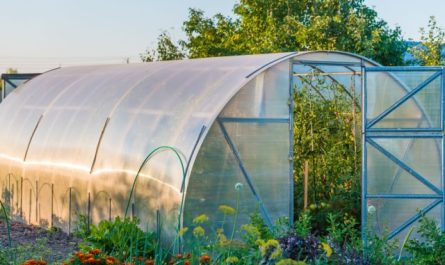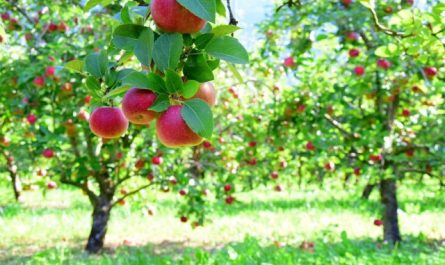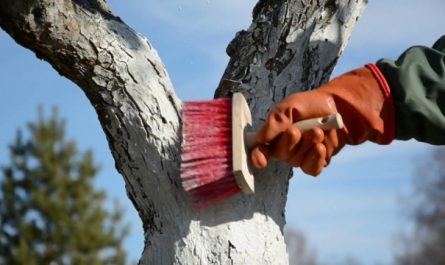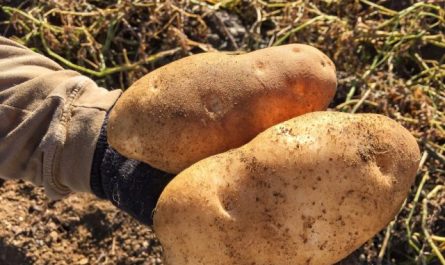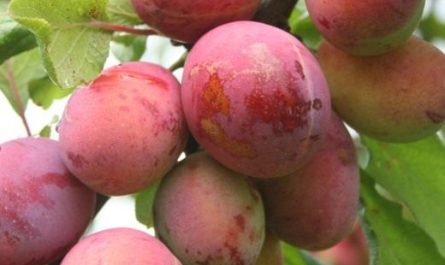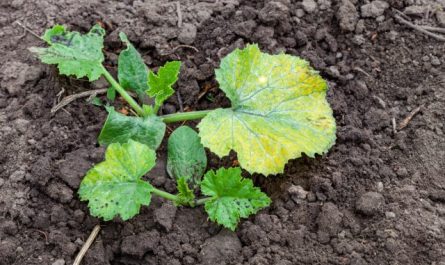With the onset of autumn, the summer chores of gardeners end – everything is grown, preserved, frozen, photographed and posted on Instagram. It’s time to tidy up. It is autumn work in the garden that many gardeners and summer residents love so much – the summer bustle is a thing of the past, and the rustle of falling leaves evokes a feeling of calm and measuredness. Meanwhile, there is still a lot of work in the garden, in particular – pruning of fruit and ornamental trees and shrubs is ahead. This article will discuss autumn pruning of garden crops.

What types of pruning are there?
Proper pruning of trees and shrubs is of great importance for disease prevention, maintaining immunity, good growth and fruiting, maintaining the health and attractive appearance of plants. In areas with severe snowy winters, this event is simply necessary for the successful wintering of our plants.
The main rule for autumn pruning in the garden is to start after the leaves have fallen, when the plants enter a period of rest and the sap flow stops. And it is necessary to complete it before the frost sets in. All procedures – sawing or pruning with pruning shears are carried out in dry weather, with clean and sharp tools.
There are several types of pruning, each with its own goals and objectives, and they are performed at different times. Therefore, it is important to understand what to cut, when and why? After all, illiterate pruning will do more harm than good. First, let’s look at the terms.
Sanitary pruning
Sanitary pruning is carried out both in spring and autumn. All broken, dried or diseased shoots are removed. Particular attention should be paid to branches with various thickenings, the so-called galls. They are where the larvae of the gall midge, a dangerous pest of fruit and berry crops, overwinter. Such branches should be cut and burned.
Sanitary pruning is necessary for all trees and shrubs without exception.
Thinning pruning
Thinning pruning has several goals at once. Removing excess shoots makes a fruit tree or bush lighter. Fruits on a non-thickened plant are well ventilated and exposed to the sun, which means they have a large mass and an attractive appearance.
In addition, thickening contributes to the emergence of various diseases and pests, and it is quite difficult to process such plantings.
Thinning pruning is also very important for successful wintering of plants. The abundance of branches retains snow, and during heavy snowfalls real snowdrifts often form in the crowns. In the cold, shoots lose elasticity and often break. Therefore, when preparing for winter, it is necessary to remove excess shoots, especially those growing inside the crown, and water sprouts – young vertically growing shoots.
Forming pruning
Formative pruning is used from an early age of the seedling and is aimed at the correct formation of the bush or crown of the tree. The main task of such pruning is to stimulate the most powerful shoots to grow and bear fruit. Along the way, branches growing in an undesirable direction are completely removed or shortened.
As a result of such pruning, all parts of the plant receive nutrients and sunlight evenly, and, as a result, a properly formed plant easily copes with diseases and pests, winters well, and pleases with an abundant, high-quality harvest in the summer.
Rejuvenating pruning
Rejuvenating pruning is the removal of old branches from a tree or shrub. As a result of such pruning, space appears for the growth of young shoots, which contributes to an increase in yield, rejuvenation and prolongation of the life of the plant.

Subtleties of autumn pruning of fruit trees
In central Russia with cold, often unpredictable winters, it is not advisable to carry out autumn pruning. apple and pear treesDuring winter frosts, the bark may freeze in places where branches are cut, and the wood may dry out. A heavily pruned tree may simply die from prolonged frosts.
Therefore, in the fall, fruit trees undergo sanitary pruning, and if necessary, thinning so that snow does not linger in the crown. All other manipulations are left for the spring. This is especially true for young seedlings – they are pruned only in the spring.
All of the above also applies to stone fruit crops. Cherries, cherries, plums, peaches и apricots It is better to prune in early spring, and in autumn remove only dry and broken branches and root shoots, which serve as a winter shelter for some insect pests.
Autumn pruning of berry bushes
Berry bushes spend a lot of energy during the growing season and fruiting. To help them prepare for the new season and extend their life, you need to pay special attention to them in the fall. Fertilizing after fruiting, fighting diseases and pests, loosening and timely watering are very important measures for caring for berry bushes, but autumn pruning is a mandatory element of agricultural technology for these crops.
Many fruit bushes wake up quite early in the spring and you may simply not have time to carry out the necessary pruning in the spring. Therefore, in addition to sanitary pruning, berry bushes also undergo thinning and, if necessary, rejuvenating pruning in the fall.
When pruning berry bushes in the fall, it is necessary to follow several rules:
- Do not shorten the shoots – it is better to do this in the spring.
- It is necessary to cut old or dried branches as close to the ground as possible.
- When cutting branches, do not leave stumps, but make a cut “on the ring”.
- Cut off all immature shoots, as they will not withstand severe frosts and may damage the winter hardiness of the bush.
- When performing rejuvenating pruning, ensure that the number of cut shoots does not exceed the number of remaining ones.

Peculiarities of Raspberry Pruning
Everyone’s favorite raspberry is the first contender for autumn pruning. And here you don’t even have to wait for the leaves to fall. The fact is that this crop bears fruit on two-year shoots, which will not yield a harvest next year. Therefore, it is advisable to cut them out immediately after picking the berries.
Then the young shoots will get more air and sun this year, which means they will ripen better and be able to prepare for wintering and subsequent abundant fruiting. Fruiting shoots are easy to distinguish from young ones – they are brown in color and break easily.
Everbearing raspberry varieties are cut back completely to the root after the leaves have fallen. In the spring, young shoots will begin to grow, on which berries will subsequently appear. Everbearing raspberries, unlike ordinary ones, bear fruit on one-year-old shoots.
Features of honeysuckle pruning
Honeysuckle is one of the first to please us with its harvest, so autumn pruning is simply necessary for it. In addition, with age, this bush grows strongly, becoming covered with a large number of branches.
When pruning honeysuckle, you need to remove all shoots and shoots lying on the ground, and thin out the bush itself, cutting out all weak or simply unnecessary shoots. Do not shorten the remaining branches, since the main fruiting of this crop occurs on powerful annual shoots.
Peculiarities of pruning currants
Shoots black currant reduce productivity at the age of 4-5 years, therefore, starting from this age, it is necessary to remove old branches, allowing young shoots to mature and gain strength.
Red and white currants are able to please with a good harvest a little longer than black, however, starting from 6-7 years of age, and these varieties need to cut out old shoots. It is best to do this in the fall.
Peculiarities of Gooseberry Pruning
Gooseberry fruiting begins at the age of 2-3 years and up to 6-7 years of age the bush pleases with a friendly return of fruits. From about this age the bush begins to age.
When carrying out autumn pruning, it is necessary to remove old branches and fat shoots that do not produce berries every year. Pruning is very important for gooseberries – a neglected bush begins to get sick and stops bearing fruit.

Features of autumn pruning of fruit vines
Fruit vines have long ceased to be a rarity in our gardens. Today, gardeners successfully grow grapes, lemongrass and actinidia. All these crops are characterized by strong sap flow in the spring, so they are pruned only in the fall. Sanitary pruning is combined with formative and thinning.
Pruning ornamental shrubs in autumn
Autumn pruning of ornamental shrubs directly depends on their flowering time. And if sanitary pruning is carried out in the fall for all shrubs without exception, then formative pruning (with shortening of shoots) will not harm only crops that bloom on shoots of the current year.
To avoid making a mistake, you need to remember that in the fall you can only trim bushes that bloom in mid-summer, for example:
- some species of spirea that bloom in summer;
- Hydrangea paniculata;
- hydrangea;
- Buddleia davidii;
- rowan;
- silverweed and many others.
I have listed the most common ornamental shrubs that bloom on the current year’s shoots. But in fact, their list is much more impressive. If you have ornamental shrubs that you do not know how and when to prune, it is better to limit yourself to sanitary pruning in the fall, and do the main haircut after flowering.

Peculiarities of pruning rose bushes
In most of our country, roses overwinter under cover, so autumn pruning is simply necessary for them. Pruning is carried out in mid-autumn in dry, clear weather. First, all branches growing inside the bush, damaged, weak and immature shoots are removed. In grafted varieties, all root shoots are removed.
There are several ways to prune roses – with strong, medium and weak shortening of branches. Most often, gardeners use the second method, cutting off shoots above the fifth or sixth bud. An important nuance – the bud should be outside, otherwise the new shoot will grow inside the bush.
Climbing roses should not be shortened much in the fall; it is enough to carry out sanitary pruning and remove flowers and buds.
Dear readers! Autumn pruning of trees and shrubs is a necessary stage in plant care. Correctly performed pruning in compliance with the terms contributes to good development, preservation of immunity, increased yield and well-groomed appearance of plants. Therefore, do not ignore this event in cases where it is necessary.






